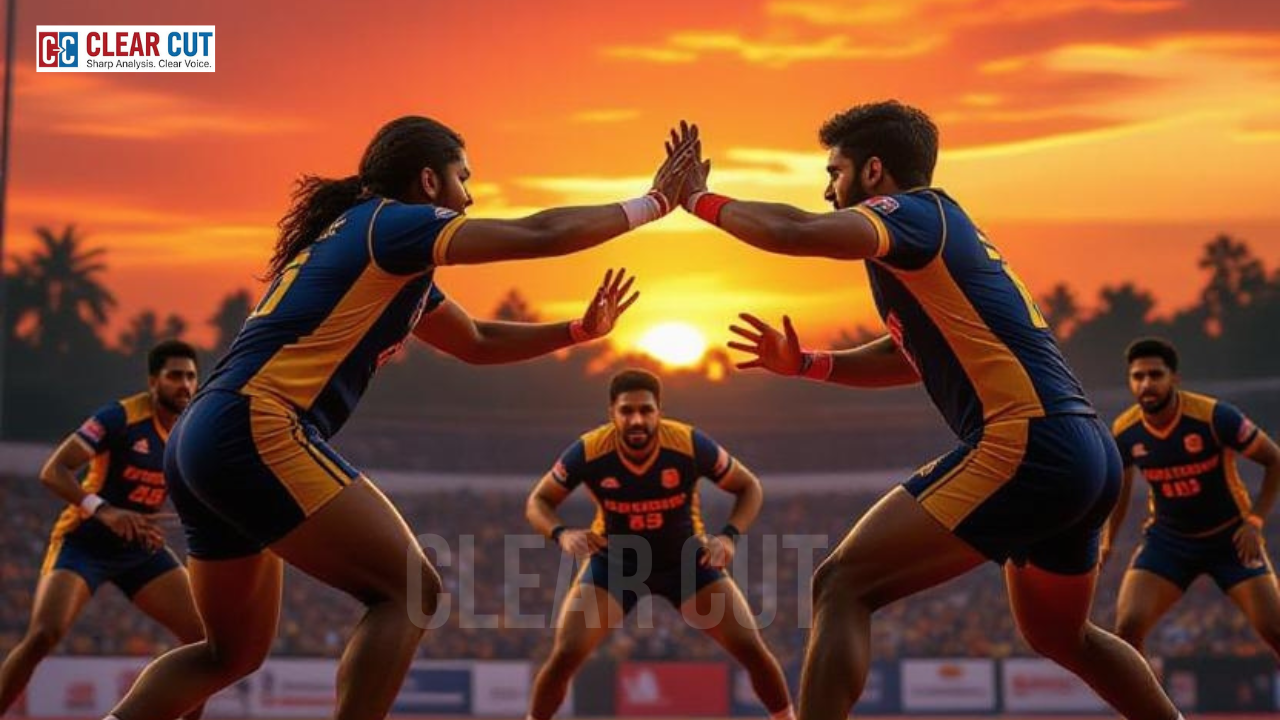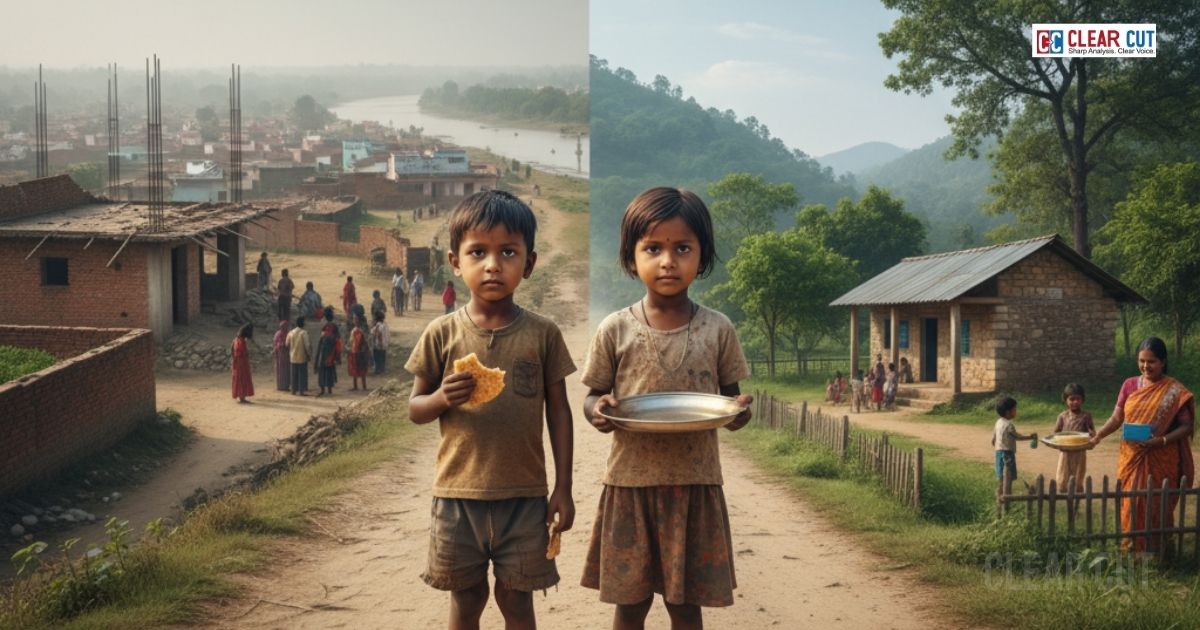Photo Credit: Antara Mrinal
Clear Cut Desk
New Delhi, UPDATED: Aug 29, 2025 10:54 IST
Written By: Antara Mrinal
When a nation’s athletes take the field, they do more than just compete. They are carrying the hopes and emotions of millions. They promote unity in diversity, celebrate regional diversity, and heal social divisions. From grassroots traditions to international arenas, from hockey to cricket, and through strong sporting policies, they shape our collective identity, a nation bound by aspiration, resilience, and shared triumph.
A 2024 Ipsos survey revealed that approximately 75% of urban Indians feel proud watching their Olympic team, and a similar proportion believes these global events bring the country together (The Indian Express). This phenomenon, sometimes dubbed as “gold-medal fever”, strengthens social identity and collective morale, even among individuals who aren’t regular sports fans (Daily Telegraph).
Cricket and Hockey: Icons of Unity
Cricket often emerges as the heartbeat of India’s unity. From the unforgettable 1983 and 2011 World Cup wins to the high-octane IPL, the sport transcends regional and linguistic divides (The Commoner News). It’s not simply a game; it’s a cultural pulse. However, hockey was India’s pride until cricket took over, winning multiple Olympic gold medals under greats like Major Dhyan Chand.These victories established a legacy of national pride.
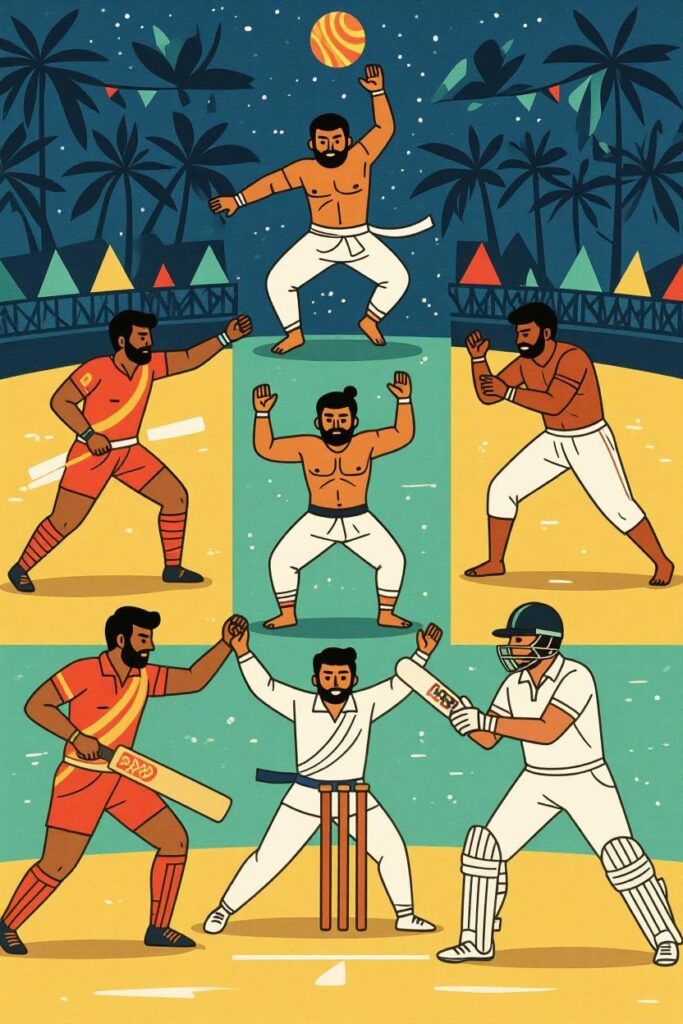
Social Mobility, Inclusivity and Diversity
Sports have a unique power to unite people from diverse backgrounds, including different castes, social classes, and religious beliefs. The idea that brilliance knows no bounds is reinforced by the widespread celebration of Indian icons such as Dutee Chand (Odisha), Mary Kom (Manipur), and Sachin Tendulkar (Maharashtra) (Scribd). In a similar vein, women like P.V. Sindhu, Mirabai Chanu, Hima Das, and Manu Bhaker have gained greater recognition, contributing to a shift in in gender stereotypes and an increase in inclusivity (Scibd).
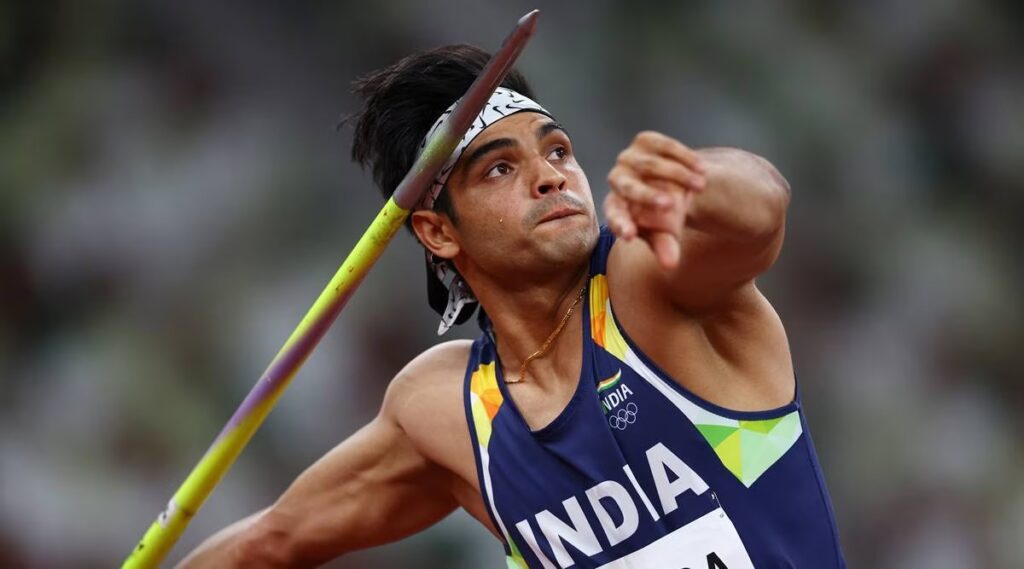
Neeraj Chopra- the indian express | Photo Credit: Internet
Community Roots and Rural Legends
From rural wrestling kings’ arenas, Indian sports are deeply rooted in local culture. Traditional games like Kushti, Kabaddi, and Jalikattu remain vibrant symbols of communal pride and identity (PMC). As pointed out by a Reddit user: “We need scouts in villages, not just stadiums. We need programs that identify raw, natural talents, passed down through generations.”This statement highlights the importance of grassroots support in fostering excellence at the national level.
In the realm of sports, states such as Haryana perform significantly better than other states. Even though they compriseonly 1.5% of India’s population, Haryana athletes consistently dominate Asian Games performances and win 52% of the nation’s individual Olympic medals. In a similar vein, the Fit India Movement, which was introduced on August 29, 2019, on the National Sports Day, encourages regular exercise and sports engagement while reaffirming physical activity as a civic virtue.
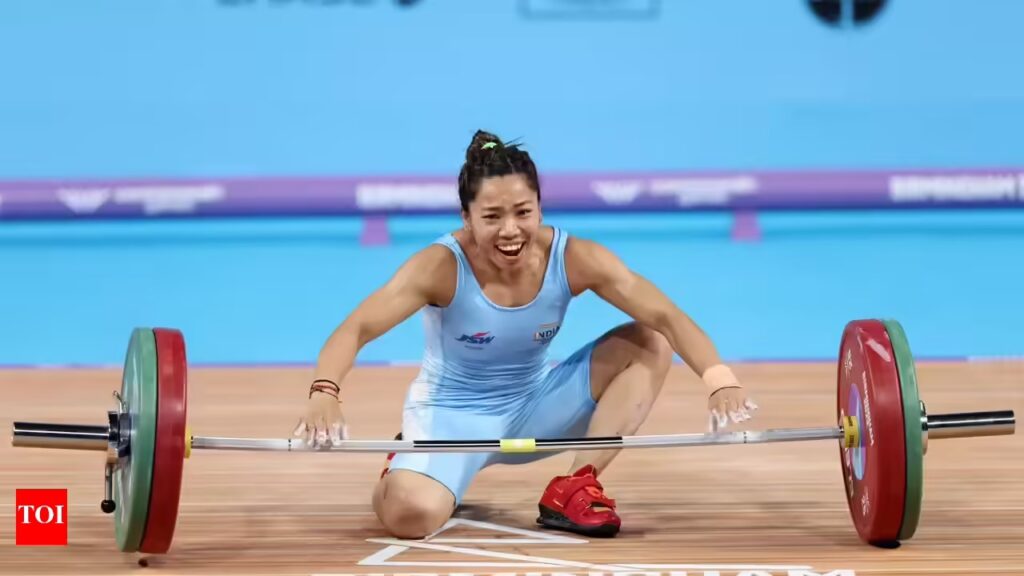
Mirabai Chanu: Times of India | Photo Credit: Internet
Areas of Improvement in Sports in India
Every triumph gives you chills, but it also begs the question, “Why not more?” If a country’s soul is reflected in its sports, India’s reflection is bright but flawed. Why does a Mirabai Chanu’s or Neeraj Chopra’s journey feel like a miracle rather than a system operating as it ought to?
It is because children discover sports by accident, not because the system actively seeks them out. Determining whether we can create the structures to support athletes, rather than merely congratulating them on their accomplishments is a difficult task. Neeraj Chopra talked about how sports science, physiotherapy, and nutrition labs influenced his training while he was overseas. Thousands of athletes back home are still required to use outdated techniques, some of which are effective, but often insufficient.Regarding women, hundreds of girls leave due to unsafe facilities, a lack of support, or just the pressure of societal norms. Although they deliver gold, women are rarely given comparable opportunities in leagues, compensation, or recognition. In athletics, inclusivity is about changing attitudes, not simply about numbers.
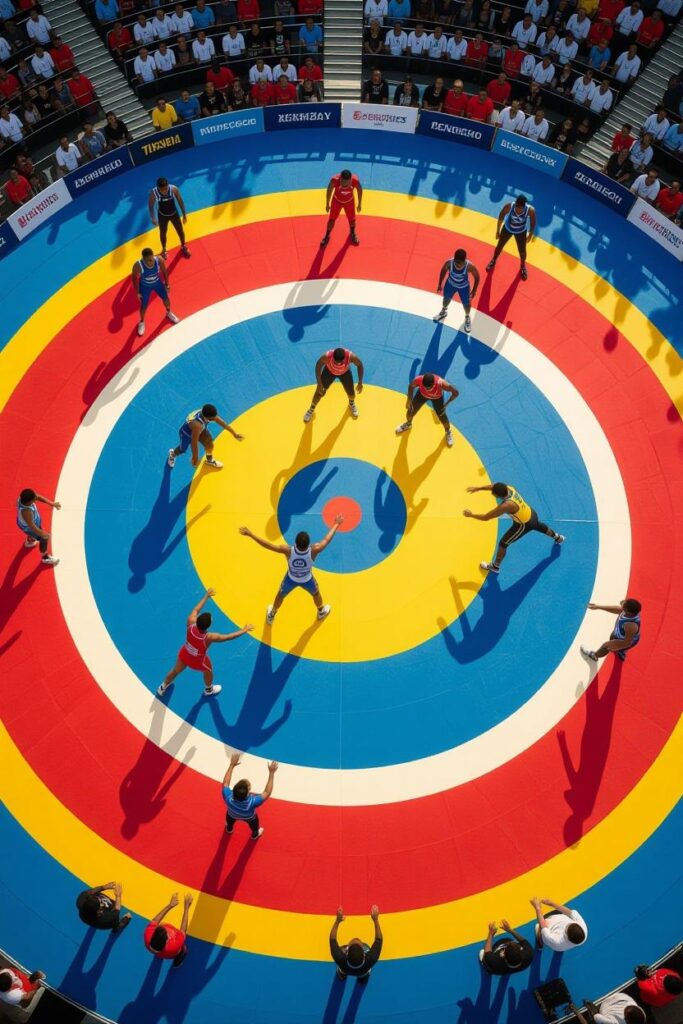
Lastly, the controversies in federations – whether in wrestling or athletics – remind us that mismanagement doesn’t just hurt reputations; it also breaks athlete morale. And when the cheering stop, career ends, many former athletes are left without pensions or support, forgotten by the very nation they once lifted.
India doesn’t lack talent; it lacks a system that multiplies talent. If cricket can become an industry worth billions, so can wrestling, hockey, and athletics. Of course, only if we invest smartly. With the right mix of grassroots development, science, and governance, India’s goal of becoming one of the top five sporting nations by 2047 will be more of a plan waiting to be executed.


